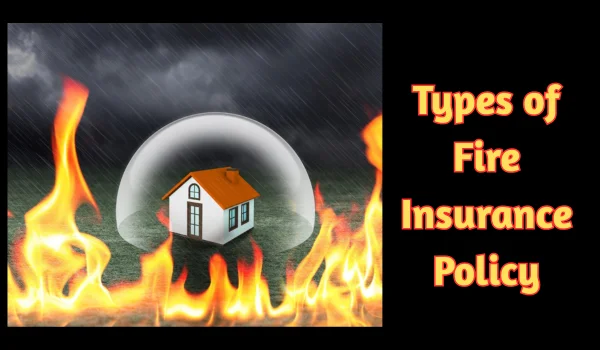Fire is one of the most devastating risks that can destroy homes, offices, factories, and warehouses in minutes. Every year, India records thousands of fire-related incidents that cause not only loss of property but also financial and emotional distress. This makes fire insurance one of the most crucial types of general insurance for individuals, businesses, and industries.
Fire insurance provides a financial shield against loss or damage caused by fire and allied perils. It helps businesses recover and rebuild after fire incidents without suffering massive financial setbacks.
In this detailed guide, we’ll explore the meaning, features, and types of fire insurance policies in India, as well as how claims are settled, who should buy them, and why fire insurance is essential in a growing economy like India.
🔍 What Is Fire Insurance?
Fire Insurance is a contract between an insurance company and the insured in which the insurer agrees to compensate the insured for losses or damages caused by fire, lightning, or other specified perils, subject to policy terms.
The main objective is to restore the insured to the same financial position as before the loss occurred — not to make a profit.
➤ Legal Definition (As per IRDAI guidelines):
Fire insurance provides indemnity to the insured for loss or damage to property caused by fire or other allied perils, such as lightning, explosion, implosion, riot, strike, storm, cyclone, flood, or impact damage.
🎯 Objectives of Fire Insurance
- To compensate the insured for loss due to fire or related perils.
- To provide financial stability to individuals and businesses after accidental fires.
- To encourage safety measures and risk management practices.
- To promote business continuity by reducing the impact of fire losses.
- To protect investments in residential, commercial, and industrial properties.
⚙️ Key Features of Fire Insurance
- Covers loss or damage caused by fire and other specified perils.
- Applicable to buildings, stock, machinery, furniture, etc.
- Coverage amount (Sum Insured) is usually based on market value or reinstatement value.
- Premiums depend on type of property, risk exposure, and coverage chosen.
- Policy period is generally one year (renewable annually).
- Add-ons like earthquake, terrorism, or explosion cover can be included.
🔥 Types of Fire Insurance Policies in India

Fire insurance policies are designed to suit different property owners, business sizes, and coverage requirements. Here are the main types of fire insurance policies available in India:
Valued Policy
A Valued Policy is one in which the value of the insured property is agreed upon in advance between the insurer and the policyholder. In case of total loss due to fire, the insurer pays the pre-agreed value, regardless of the actual market value at the time of loss.
✅ Features:
- Suitable for rare, antique, or unique properties.
- Value is predetermined and fixed in the policy document.
- Simplifies claim settlement since valuation disputes are avoided.
🔸 Example:
If a rare artwork is insured for ₹10 lakh and it gets destroyed by fire, the insurer pays ₹10 lakh even if the market value at the time was slightly different.
Valuable Policy
A Valuable Policy is based on the market value of the property at the time of the loss. The insurer compensates the insured based on the property’s current market value, not the value when the policy was taken.
✅ Features:
- Commonly used for machinery, furniture, and buildings.
- Depreciation is considered before claim payment.
- Ensures fair indemnification.
🔸 Example:
If a factory machine worth ₹5 lakh depreciates to ₹4 lakh and is destroyed in a fire, the insurer pays ₹4 lakh.
Specific Policy
Under a Specific Policy, only a fixed sum insured is covered, even if the actual loss is higher. The insurer’s liability does not exceed the specified amount.
✅ Features:
- The policyholder bears any excess loss beyond the insured amount.
- Common for small businesses and homeowners.
🔸 Example:
If a warehouse is insured for ₹20 lakh but the fire damage costs ₹25 lakh, the insurer will pay ₹20 lakh only.
Comprehensive Policy (All-Risk Fire Policy)
A Comprehensive Fire Insurance Policy offers extensive coverage beyond fire damage. It covers multiple risks, including burglary, explosion, riot, earthquake, flood, and impact damages.
✅ Features:
- Provides “all-in-one” protection.
- Ideal for industrial and commercial properties.
- Covers both movable and immovable assets.
🔸 Example:
A manufacturing unit can get compensation for damages due to fire, explosion, and subsequent water damage from firefighting efforts — all under one policy.
Replacement or Reinstatement Policy
This type of policy provides compensation based on the replacement cost rather than the depreciated value. The insurer reimburses the cost of replacing or reinstating the property to its original condition.
✅ Features:
- Suitable for factories, offices, and commercial establishments.
- Helps restore operations faster after loss.
- Premiums are slightly higher due to full replacement coverage.
🔸 Example:
If a machine destroyed by fire originally cost ₹8 lakh and a new one costs ₹9 lakh, the insurer pays ₹9 lakh (replacement cost).
Floating Policy
A Floating Fire Policy covers goods or property located at multiple places under a single policy. This is particularly useful for businesses with warehouses or branches in different locations.
✅ Features:
- One policy covers several locations.
- Premium is based on the average total value of goods.
- Reduces administrative burden.
🔸 Example:
A textile company with warehouses in Delhi, Mumbai, and Chennai can insure all locations under one floating policy.
Average Policy
An Average Policy includes a ‘condition of average’ clause, which means if the property is underinsured, the insured will bear a proportionate part of the loss.
✅ Features:
- Encourages proper insurance valuation.
- Claim amount = (Sum Insured / Actual Value) × Loss Amount.
🔸 Example:
If a building worth ₹50 lakh is insured for ₹25 lakh and suffers ₹10 lakh damage, the insurer will pay only ₹5 lakh (half the loss) because the property was underinsured.
Add-On or Declaration Policy
A Declaration Fire Policy is meant for businesses where the value of stock fluctuates regularly. The insured declares the average stock value monthly, and the final premium is adjusted at year-end.
✅ Features:
- Suitable for trading and manufacturing companies.
- Prevents over-insurance or under-insurance.
- Helps in accurate premium calculation.
🔸 Example:
A company with fluctuating stock levels can pay a premium based on declared monthly averages instead of a fixed insured amount.
Consequential Loss Policy (Loss of Profit Policy)
This policy covers loss of profit or income that results indirectly from fire damage — for example, if a factory halts production due to a fire incident.
✅ Features:
- Covers fixed costs, wages, and loss of profit.
- Essential for industrial operations.
- Often taken along with a standard fire policy.
🔸 Example:
If a fire causes a factory shutdown for two months, the insurer compensates for lost production and business interruption.
🧾 Fire Insurance Coverage: What’s Included and Excluded
✅ Covered Perils
- Fire, lightning, explosion, and implosion
- Riot, strike, or malicious damage
- Storm, cyclone, flood, or inundation
- Impact damage (by vehicles or aircraft)
- Leakage from automatic sprinkler systems
❌ Exclusions
- War or nuclear risks
- Arson (intentional fire by the insured)
- Spontaneous combustion
- Electrical short circuits (unless specifically covered)
- Theft after fire
💰 How Fire Insurance Claims Are Settled
- Intimation: Notify the insurer immediately after the fire.
- Surveyor Inspection: An official assesses the extent of damage.
- Submission of Documents: Include FIR, fire brigade report, photos, and inventory records.
- Claim Evaluation: The insurer calculates the loss and applies average clause if required.
- Settlement: Payment is made directly to the insured’s bank account.
🏭 Who Should Buy Fire Insurance?
- Homeowners – To protect houses, furniture, and valuables.
- Businesses – To cover factories, warehouses, and inventory.
- Commercial Establishments – Shops, restaurants, and offices.
- Manufacturers – For machinery and production equipment.
- Property Owners & Landlords – For rented buildings.
🔑 Importance of Fire Insurance in India
- Financial protection against massive losses.
- Essential for business continuity.
- Mandatory for bank loans on property.
- Boosts investor and stakeholder confidence.
- Encourages better fire safety practices.
✅ Conclusion
Fire insurance is a vital part of risk management for every property owner and business in India. With the rising number of fire accidents, having a proper fire insurance policy ensures financial stability and peace of mind.
Different types of fire insurance policies — from Valued to Comprehensive, Floating, and Loss of Profit — cater to specific needs. Choosing the right one depends on the nature of your property, risk exposure, and business operations.
As India grows industrially and commercially, fire insurance will remain a cornerstone for safeguarding assets and ensuring business continuity.




